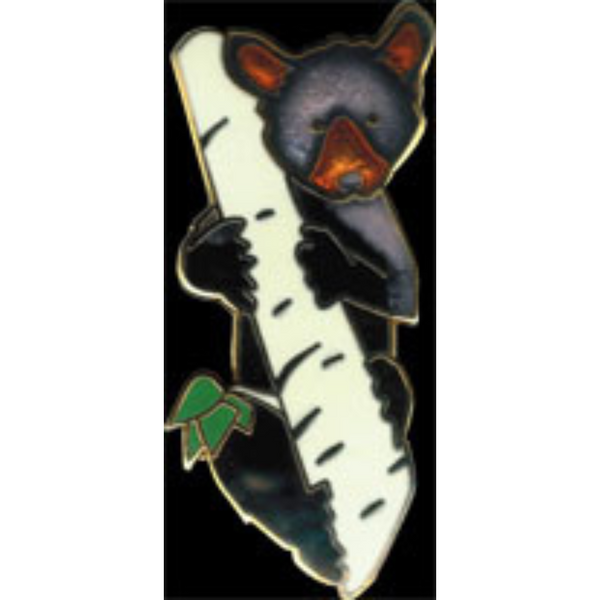Product Overview
These pins have been made almost entirely by hand. This brief description of the process can only give a hint of the substantial work required to produce each pin.
The enamels themselves are glass, colored by metal oxides. They start out as chunky material which is ground into a powder and screened to ensure fineness. It's then mixed into a paste which is applied, one color at a time, to its appointed place in the design. A small spoon, brush or even syringe is used to place these colors; if a mistake is made the piece must be repaired or discarded. Each color is fired separately so as not to bleed into another. since each glaze has its own peculiarities and different melting points, a firing order must be established. Some of the pins in this catalog have as many as 13 separate glazes and require an astounding amount of careful work for their completion.
The enamels are supported by copper, which is chosen for its ability to take platings a well as its malleability, stability and non-corrosive qualities. At Wm Spear Design, we use copper which has been recycled from the ship breaking industry, insuring that 80% of the pin by weight is recycled material. However, in order to give it shape it is first necessary to create an engraved die in hardened tool steel. Although a rough shape can be achieved with the careful use of a high speed drill, the spontaneous feel, magnificent detail and relief engraving seen here can be achieved only by a master engraver and by hand carving. Mistakes are of course irretrievable. Unusual shapes and holes require supplemental dies.
The die is placed in a drop press in which pieces of copper are individually loaded and shaped, one at a time, by bringing to bear pressures of up to 300 tons which can crack or break a die. Dies can lose their crispness with use a can pitting from disuse. Collectors are able to easily detect enamels made from a counterfeit die since no two hand fashioned items will ever look the same.
After completion of the enameling process the enamels are ground down to the level of the underlying copper and carefully polished. The findings are soldered on. Where the design allows, our U.S. made, two piece safety pins are used and must be carefully measured and soldered into place. The pins are then electroplated in gold. Wm Spear Design has pioneered a very labor intensive dual plating technique which adds even more remarkable detail by showing not one but two metal colors, say black and gold. All of these processes will result in damage to a certain percentage of the pins which must be discarded, thus making the acceptable ones that much more expensive to produce.
The enamels themselves are glass, colored by metal oxides. They start out as chunky material which is ground into a powder and screened to ensure fineness. It's then mixed into a paste which is applied, one color at a time, to its appointed place in the design. A small spoon, brush or even syringe is used to place these colors; if a mistake is made the piece must be repaired or discarded. Each color is fired separately so as not to bleed into another. since each glaze has its own peculiarities and different melting points, a firing order must be established. Some of the pins in this catalog have as many as 13 separate glazes and require an astounding amount of careful work for their completion.
The enamels are supported by copper, which is chosen for its ability to take platings a well as its malleability, stability and non-corrosive qualities. At Wm Spear Design, we use copper which has been recycled from the ship breaking industry, insuring that 80% of the pin by weight is recycled material. However, in order to give it shape it is first necessary to create an engraved die in hardened tool steel. Although a rough shape can be achieved with the careful use of a high speed drill, the spontaneous feel, magnificent detail and relief engraving seen here can be achieved only by a master engraver and by hand carving. Mistakes are of course irretrievable. Unusual shapes and holes require supplemental dies.
The die is placed in a drop press in which pieces of copper are individually loaded and shaped, one at a time, by bringing to bear pressures of up to 300 tons which can crack or break a die. Dies can lose their crispness with use a can pitting from disuse. Collectors are able to easily detect enamels made from a counterfeit die since no two hand fashioned items will ever look the same.
After completion of the enameling process the enamels are ground down to the level of the underlying copper and carefully polished. The findings are soldered on. Where the design allows, our U.S. made, two piece safety pins are used and must be carefully measured and soldered into place. The pins are then electroplated in gold. Wm Spear Design has pioneered a very labor intensive dual plating technique which adds even more remarkable detail by showing not one but two metal colors, say black and gold. All of these processes will result in damage to a certain percentage of the pins which must be discarded, thus making the acceptable ones that much more expensive to produce.






